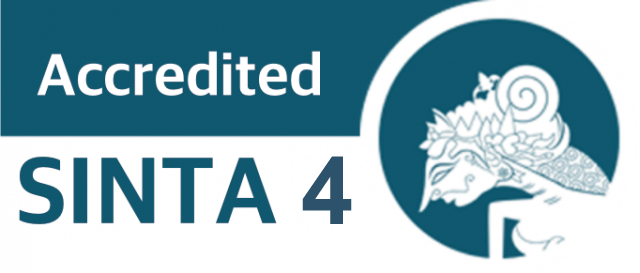New Social Movements in Mental Health Issues: The Role of Griya Schizofren in Humanizing People with Mental Health Problems (ODMK) in Surakarta City
DOI:
https://doi.org/10.23917/sosial.v6i2.12695Keywords:
griya schizofren, mental health, new social movement, people with mental health problems (odmk), stigmaAbstract
Stigma against People with Mental Disorders (ODGJ) and People with Mental Health Problems (ODMK) remains a major obstacle to psychosocial recovery and community integration. This study examines the role of Griya Schizofren in Surakarta as a community-based social movement in empowering individuals with mental health challenges. A qualitative research method was employed using a case study approach through in-depth interviews, participatory observation, and document analysis. The findings reveal that Griya Schizofren implements routine activities and mentoring programs, such as Fruit Day and Art Day, which create safe spaces for psychosocial recovery while fostering positive identities and egalitarian social relations. In addition, creative economic initiatives through the social entrepreneurship program Solvenesia generate both economic and social impacts beyond therapy, strengthening survivors’ social identity and serving as a form of advocacy for the recognition of the rights of ODMK and ODGJ. The strategy of social media outreach and cross-sector collaboration can broaden the reach of advocacy efforts and enhance public legitimacy. The study concludes that Griya Schizofren functions not merely as a support institution but as a New Social Movement that articulates resistance against stigma and marginalization through community-based practices. These findings highlight the importance of a holistic approach that integrates psychosocial, economic, and sociocultural dimensions within mental health movements, while also enriching theoretical discussions on the dynamics of New Social Movements in Indonesia.
Downloads
References
Amaluddin. (2025). Dinsos Jatim Catat 248 ODGJ Masih Dipasung. Metrotvnews.Com. https://www.metrotvnews.com/read/KvJCLlZB-dinsos-jatim-catat-248-odgj-masih-dipasung
Arawindha, U. (2023). Advokasi Hak Penyandang Disabilitas sebagai Gerakan Sosial Baru di Kota Semarang. Inklusi, 10(2), 175–196. https://doi.org/10.14421/ijds.100203
Castells, M. (2012). Networks of outrage and hope: Social movements in the Internet age. Polity Press.
Danukusumah, F., Suryani, S., & Shalahuddin, I. (2022). Stigma Masyarakat Terhadap Orang Dengan Gangguan Jiwa (ODGJ). Jurnal Ilmu Kesehatan Masyarakat, 11(03), 205–212. https://doi.org/10.33221/jikm.v11i03.1403
Farber, S. (2012). The spiritual gift of madness: The failure of psychiatry and the rise of the mad pride movement. Simon and Schuster.
Fatia, D., & Sugandi, Y. S. (2019). Gerakan Tanpa Sedotan: Hindari Kerusakan Lingkungan. Jurnal Pemikiran Dan Penelitian Sosiologi, 3(2), 66–75.
Fauziyah, T. A. (2025). 176 ODGJ di Jateng Masih Jadi Korban Pemasungan. Kompas.Com. https://regional.kompas.com/read/2025/05/28/052251878/176-odgj-di-jateng-masih-jadi-korban-pemasungan
Fraser, N. (1990). Rethinking the Public Sphere : A Contribution to the Critique of Actually Existing Democracy. Social Text, 26(25), 56–80.
Gerbaudo, P. (2012). Tweets and the streets: Social media and contemporary activism. Pluto Press.
Goffman, E. (1963). Stigma: Notes On The Management of Spoiled Identity. Prentice-Hall.
Habermas, J. (1989). The structural transformation of the public sphere: an inquiry into a category of bourgeois society. In Choice Reviews Online (Vol. 27, Issue 07). Polity Press.
Kementerian Kesehatan RI. (2019). Laporan Riskesdas 2018 Nasional. In Lembaga Penerbit Balitbangkes. Lembaga penerbit Badan Penelitian dan Pengembangan Kesehatan. https://repository.badankebijakan.kemkes.go.id/id/eprint/3514/1/Laporan Riskesdas 2018 Nasional.pdf
Kementerian Kesehatan RI. (2023). Survei Kesehatan Indonesia (SKI) 2023 Dalam Angka. In Badan Kebijakan Pembangunan Kesehatan.
Lestari, W., & Wardhani, Y. F. (2014). Stigma dan Penanganan Penderita Gangguan Jiwa Berat yang Dipasung. Buletin Penelitian Sistem Kesehatan, 17(2), 157–166.
Melucci, A. (1996). Challenging Codes: Collective Action in the Information Age. Cambridge University Press.
Miles, M. B., Huberman, A. M., & Saldana, J. (2014). Qualitative data analysis: A methods sourcebook. Sage Publications.
Nofrima, S., & Qodir, Z. (2021). Gerakan Sosial Baru Indonesia: Studi Gerakan Gejayan Memanggil 2019. Jurnal Sosiologi Reflektif, 16(1), 185–210. https://doi.org/10.14421/jsr.v16i1.2163
Papacharissi, Z. (2015). Affective publics: Sentiment, technology, and politics. Oxford University Press.
Pescosolido, B. A., Martin, J. K., Long, J. S., Medina, T. R., Phelan, J. C., & Link, B. G. (2010). “A disease like any other”? a decade of change in public reactions to schizophrenia, depression, and alcohol dependence. American Journal of Psychiatry, 167(11), 1321–1330. https://doi.org/10.1176/appi.ajp.2010.09121743
Pohan, B., & Sugandi, Y. S. (2019). Bike To Campus: Suatu Gerakan Sosial Baru Berbasis Komunitas Sepeda. Jurnal Manajemen Pelayanan Publik, 2(2), 134. https://doi.org/10.24198/jmpp.v2i2.22564
Polletta, F., & Jasper, J. M. (2001). Collective identity and social movements. Annual Review of Sociology, 27(1), 283–305. https://doi.org/https://doi.org/10.1146/annurev.soc.27.1.283
Pratisto, P. (2022). Gerakan Sosial Baru: Studi Tentang Kontribusi Benua Lestari Indonesia Dalam Mengatasi Permasalahan Lingkungan Hidup Di Kota Tangerang. 1(2), 5–24. http://repo.iain-tulungagung.ac.id/5510/5/BAB 2.pdf
Rahayu, H., & Nugraha, E. (2024). Stigma Masyarakat Terhadap Pasien Orang dengan Gangguan Jiwa di Wilayah Kerja UPT Puskesmas Pasawahan Kota Bandung: Implikasi Konseling Psikososial. Jurnal Bimbingan Dan Konseling Islam, 14(1), 19–32. https://doi.org/https://doi.org/10.29080/jbki.2024.14.1.19-32
Rashed, M. A. (2023). Mad pride and the creation of culture. Royal Institute of Philosophy Supplements, 94, 201–217. https://doi.org/https://doi.org/10.1017/S1358246123000188
Schrader, S., Jones, N., & Shattell, M. (2013). Mad pride: Reflections on sociopolitical identity and mental diversity in the context of culturally competent psychiatric care. Issues in Mental Health Nursing, 34(1), 62–64. https://doi.org/10.3109/01612840.2012.740769
Singh, R. (2010). Gerakan Sosial Baru. Resist Book.
Sulistyowati, A., & Kusumah, M. S. (2017). Analisis Wacana Gerakan Sosial Baru Mahasiswa: Studi tentang Gerakan Pendidikan Nonformal oleh Swayanaka di Jember Discourse Analysis of Student New Social Movement: Study of the Non Formal Education by Swayanaka in Jember. E-Sospol, 4(2), 107–114.
Tirta, I. (2022). 4.304 ODGJ di Indonesia Hidup dalam Pemasungan. Republika.Co.Id. https://news.republika.co.id/berita/rja5el485/4304-odgj-di-indonesia-hidup-dalam-pemasungan
Touraine, A. (1985). An Introduction to the Study of Social Movements. Social Research, 749–787.
Widyawati, N. (2023). Triana Rahmawati, Ajak Masyarakat Merangkul ODMK Lewat Griya Schizofren! Anugrah Pewarta Astra. https://anugerahpewartaastra.satu-indonesia.com/2023/artikel/4186/

Downloads
Submitted
Accepted
Published
Issue
Section
License
Copyright (c) 2025 Yuanita Hapsari, Triana Rahmawati , Deni Aries Kurniawan , Rohman Hikmat

This work is licensed under a Creative Commons Attribution 4.0 International License.















